Rheology, Easy as Pie
Jennifer Vail | Mark Staub | Morgan Ulrich
March 14, 2024
I love a good experiment in the kitchen, especially when it involves baking and desserts. In celebration of Pi Day, let’s take science and experiments into the kitchen with pie dough and fillings… and a rheometer.
If you’ve ever attempted to make a pie, you know that temperature is king when it comes to the dough, especially when butter is used. Cold butter leads to flaky layers because when cold butter hits a warm oven, it’ll heat up, release steam, and create the air pockets that lead to a tender, perfect crust. Over-softened butter before baking will lead to a tough crust and inedible pie. Most recipes warn against warming up the dough above 72 °F; if your oven heats up your kitchen close to 80 °F, butter beware.
However, cold dough can also pose problems. If your dough is colder than room temperature, it will be brittle and will crack when you try to roll it out. This is why recipes specify to let dough sit at room temperature for a short amount of time, so dough is not too hot or too cold before shaping and baking.
As scientists, we decided to use our rheometer to measure what actually happens with pie dough and raspberry filling during preparation and baking. Rheometers measure the flow properties of materials, and you can see how different conditions can affect properties such as stiffness and flow.
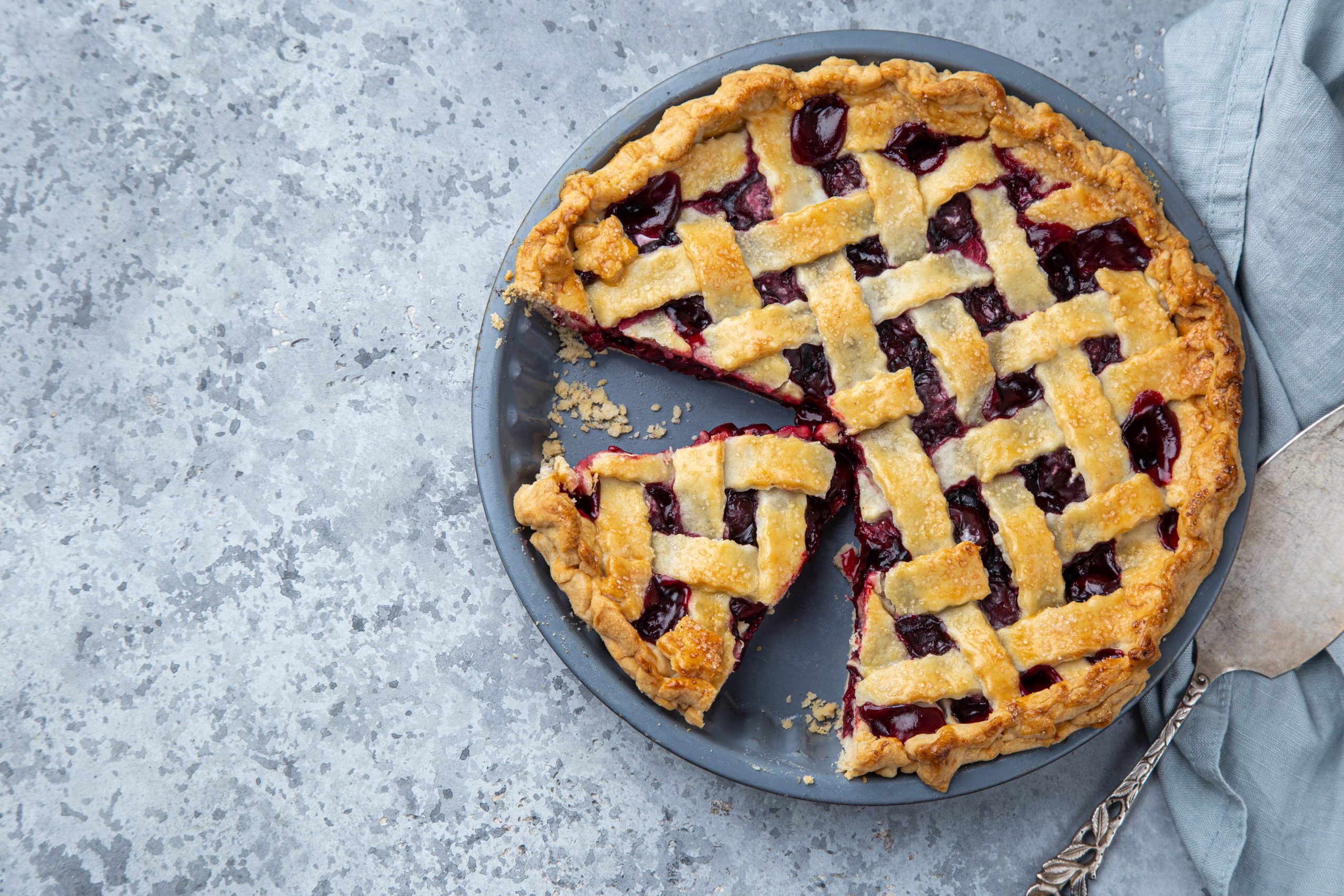
Strain Sweeps
Strain (or amplitude) sweeps are used to characterize viscoelastic materials’ deformation. Most viscoelastic materials’ physical properties are independent of strain up to a critical strain level. Below this critical level is called the Linear Viscoelastic Region (LVR) and stress has a clear linear relationship with strain. Beyond this critical strain level, the material’s behavior is non-linear and the storage modulus declines.
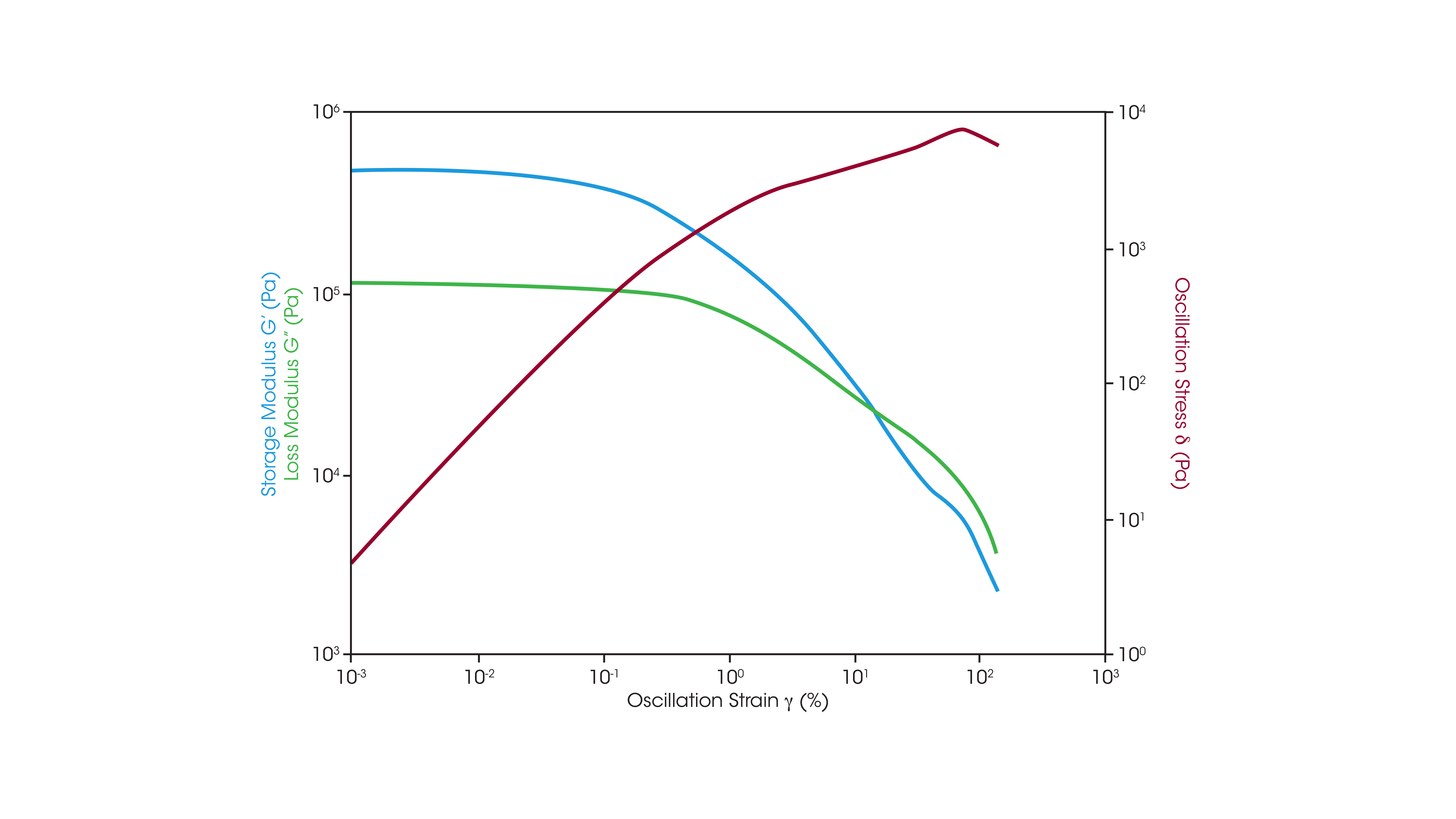
For pie crusts, this means that if you start to see cracks in the rolled-out dough, you’re beyond the critical strain level, which is determined by the LVR. The dough’s storage modulus and loss modulus decrease with temperature, making it more pliable so thawed dough can handle more force without being brittle and cracking. By bringing the dough up to room temperature, you would need a lot more force in your rolling pin to hit that critical strain level and create cracks.
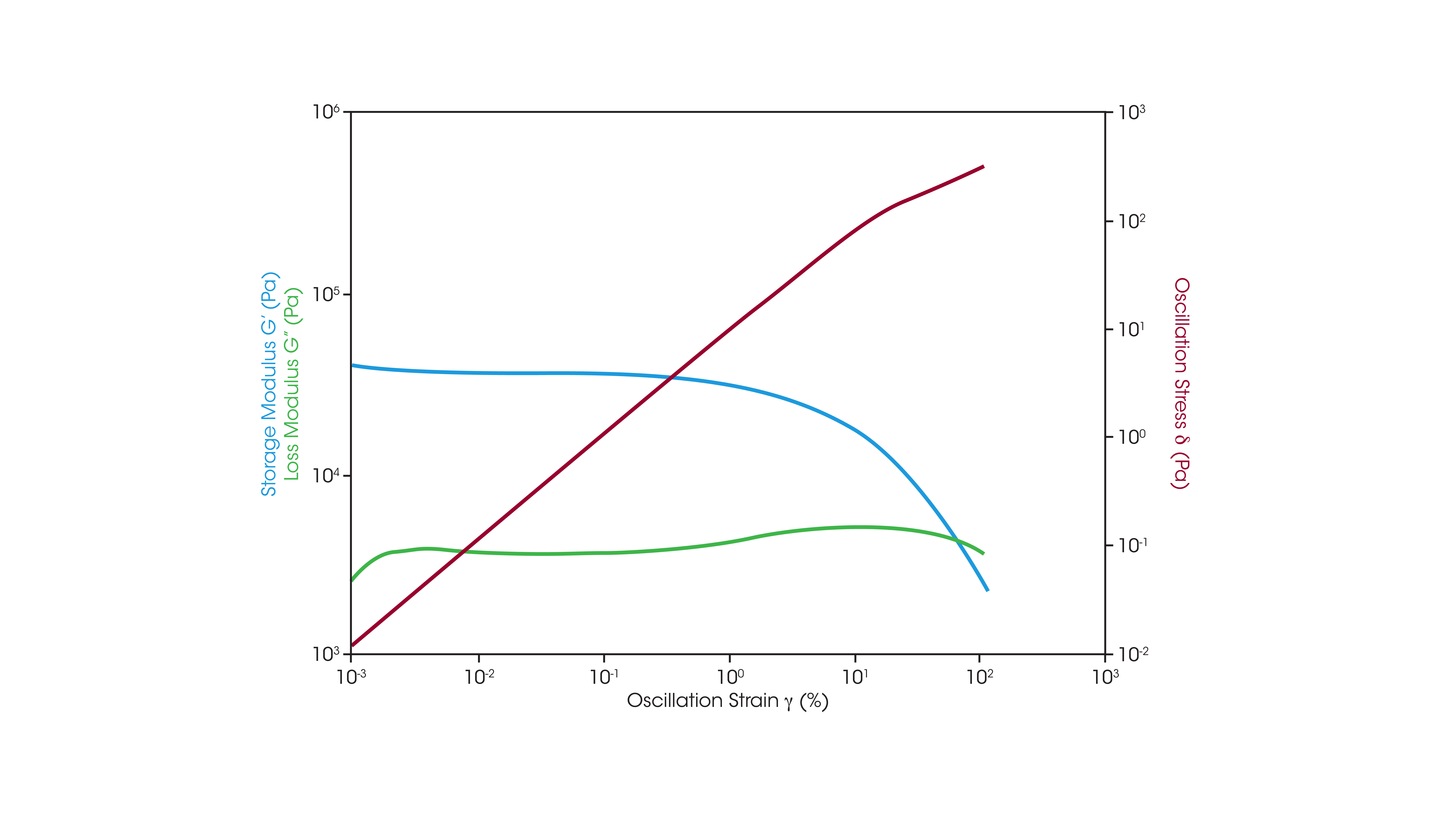
If you go beyond the critical strain of the pie filling, the structure breaks down. This obviously happens while we eat the pie, but most bakers don’t want the filling breaking down before that point!
Frequency Sweeps
Frequency sweeps test samples over a range of oscillation frequencies at a constant oscillation amplitude and temperature. Our pie crust frequency sweep shows that at lower temperatures, the crust is “stiffer” with a higher storage modulus. Therefore, it can break easier during pie preparation. Hence the recipe and box instructions to always let pie crust set at room temperature before rolling and shaping.
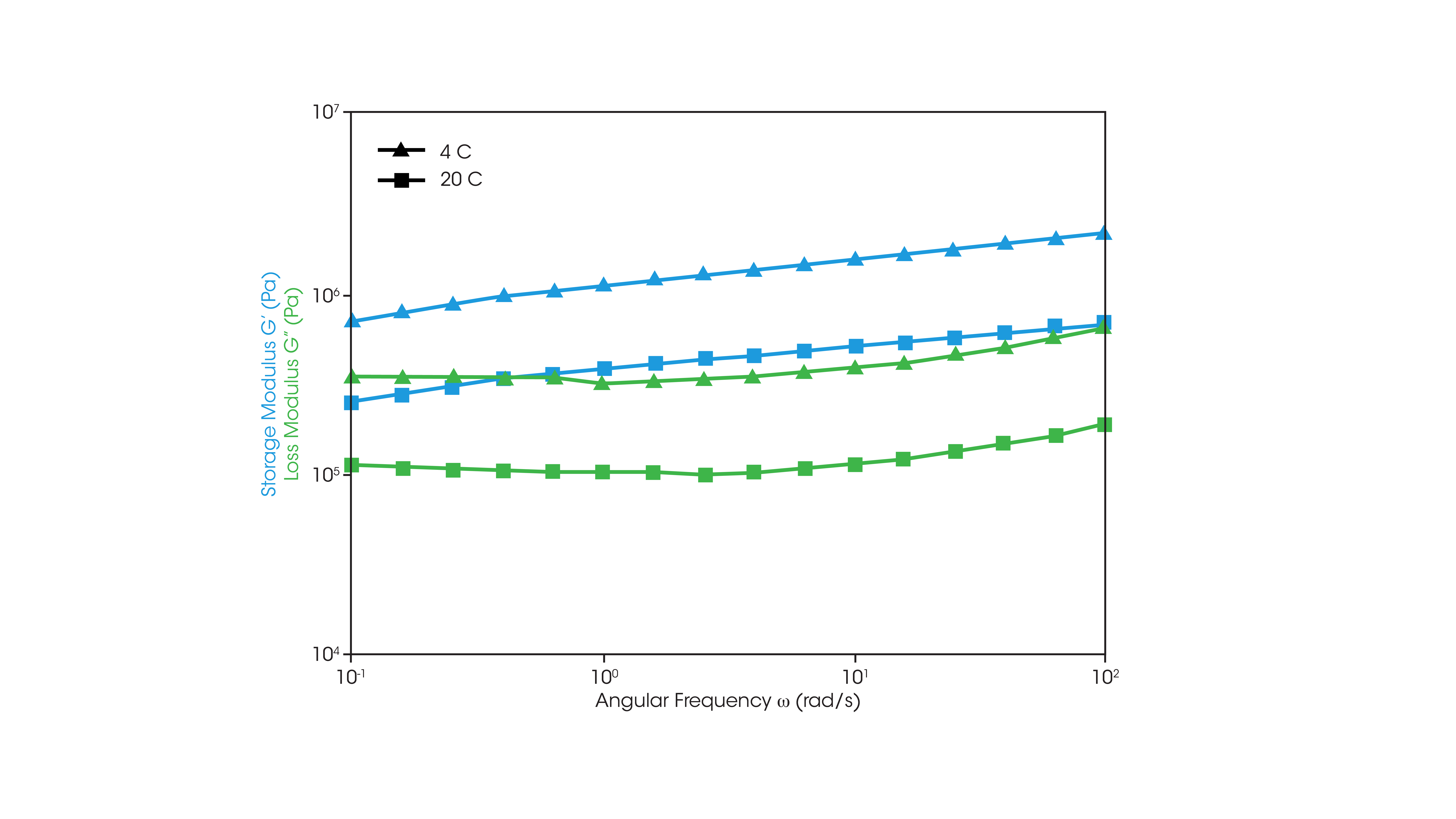
Raspberry pie filling shows a similar trend in its frequency sweep, but its loss modulus is much lower because of its weak structure.
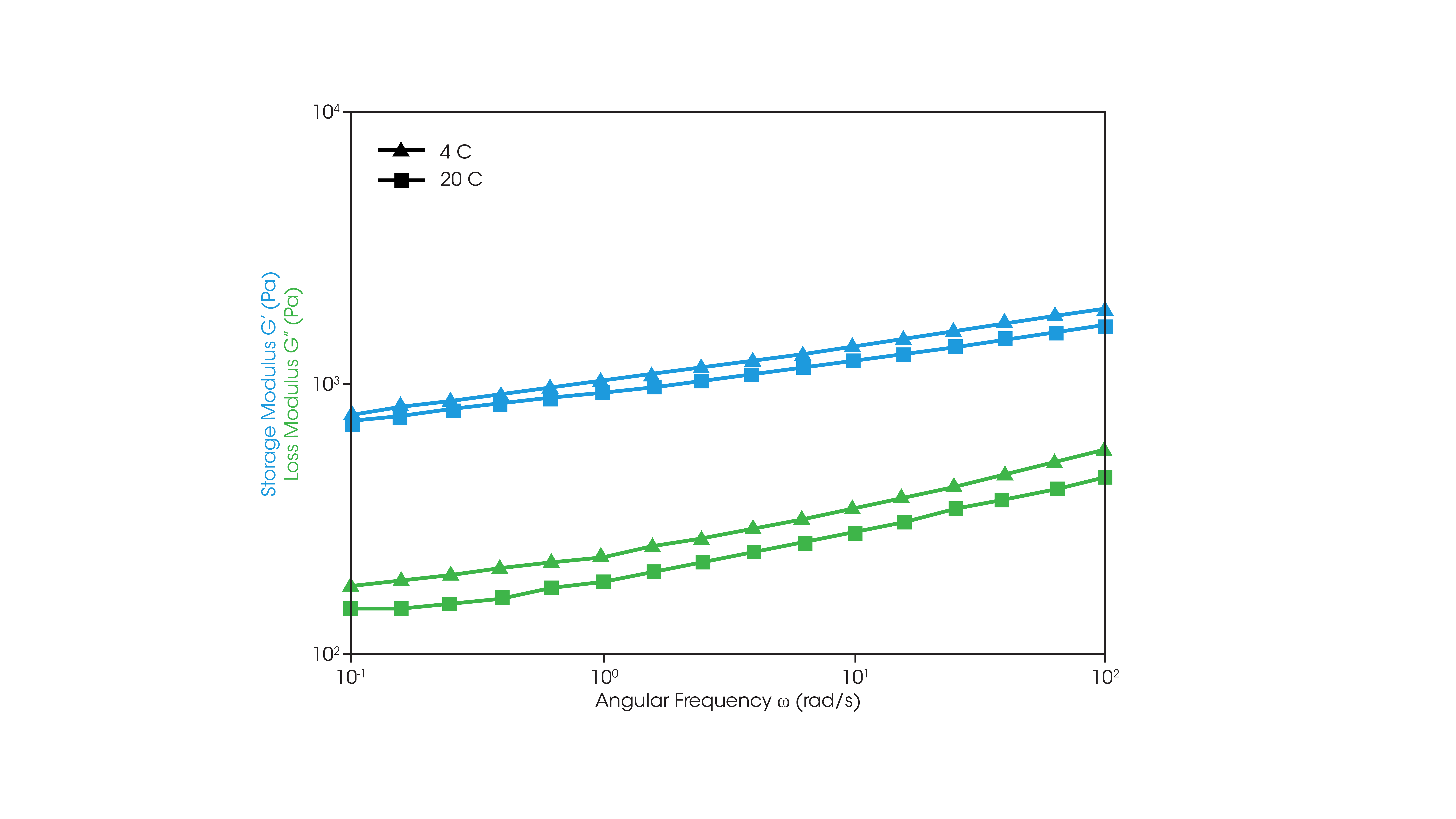
Flow Temperature Ramp
Flow temperature ramps are used to measure viscosity’s change due to changes in temperature. Our flow temperature ramp of the pie filling shows that it has much higher viscosity at low temperatures, meaning it has a thicker consistency. Viscosity drops as the filling is heated, though, and it becomes gooier between 10 and 35 °C.
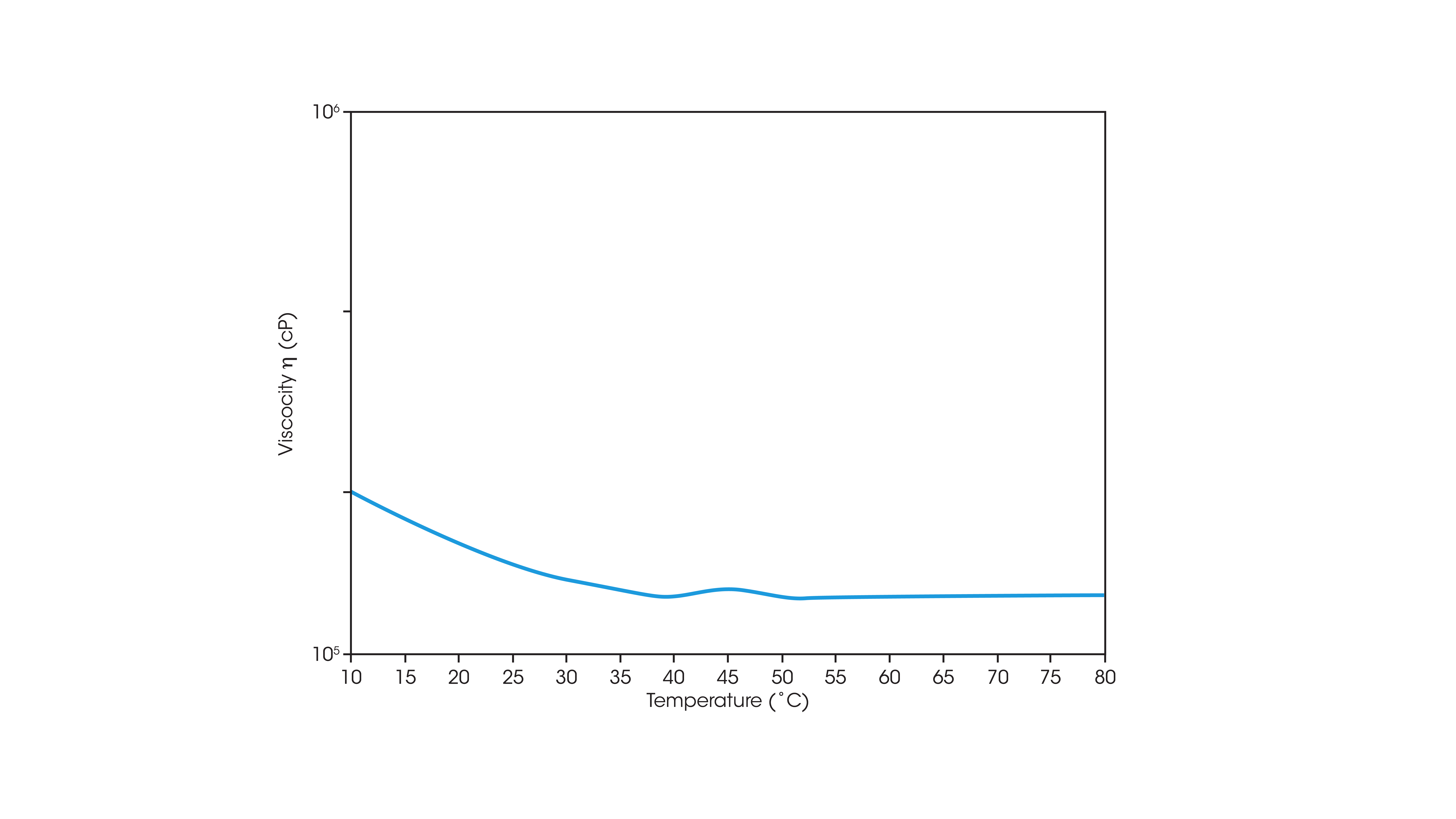
However, viscosity plateaus after 40 °C and does not continue becoming runnier. This behavior is due to thickeners in the pie. As a result, you can cut into a steaming hot pie and the filling does not flow away.
A Sweet Slice of Rheology
Pie baking instructions and results make much more sense through the lens of rheology. The careful thawing of pie crust moves it from its brittle, cold state to a more malleable texture without melting the butter. And the filling contains cornstarch and other thickeners that maintain their viscosity even at high temperatures. While pi is irrational, our favorite pie recipes make even more logical sense when we dig into the rheology of pie.
Other Resources
- Application Note – Determine Viscoelasticity and Spreadability of Cream Cheese
- Application Note – Exploring the Viscoelastic Properties of Cheese Using a Rheometer
- Application Note – Evaluation of Foods with Reduced Fat Content
- Application Note – Rheological Characterization of Yogurt
- Application Note – Analysis of Cheddar and Mozzarella Cheese by TGA and DSC
- Application Note – Examination of Roasted Coffee Beans Using TGA







